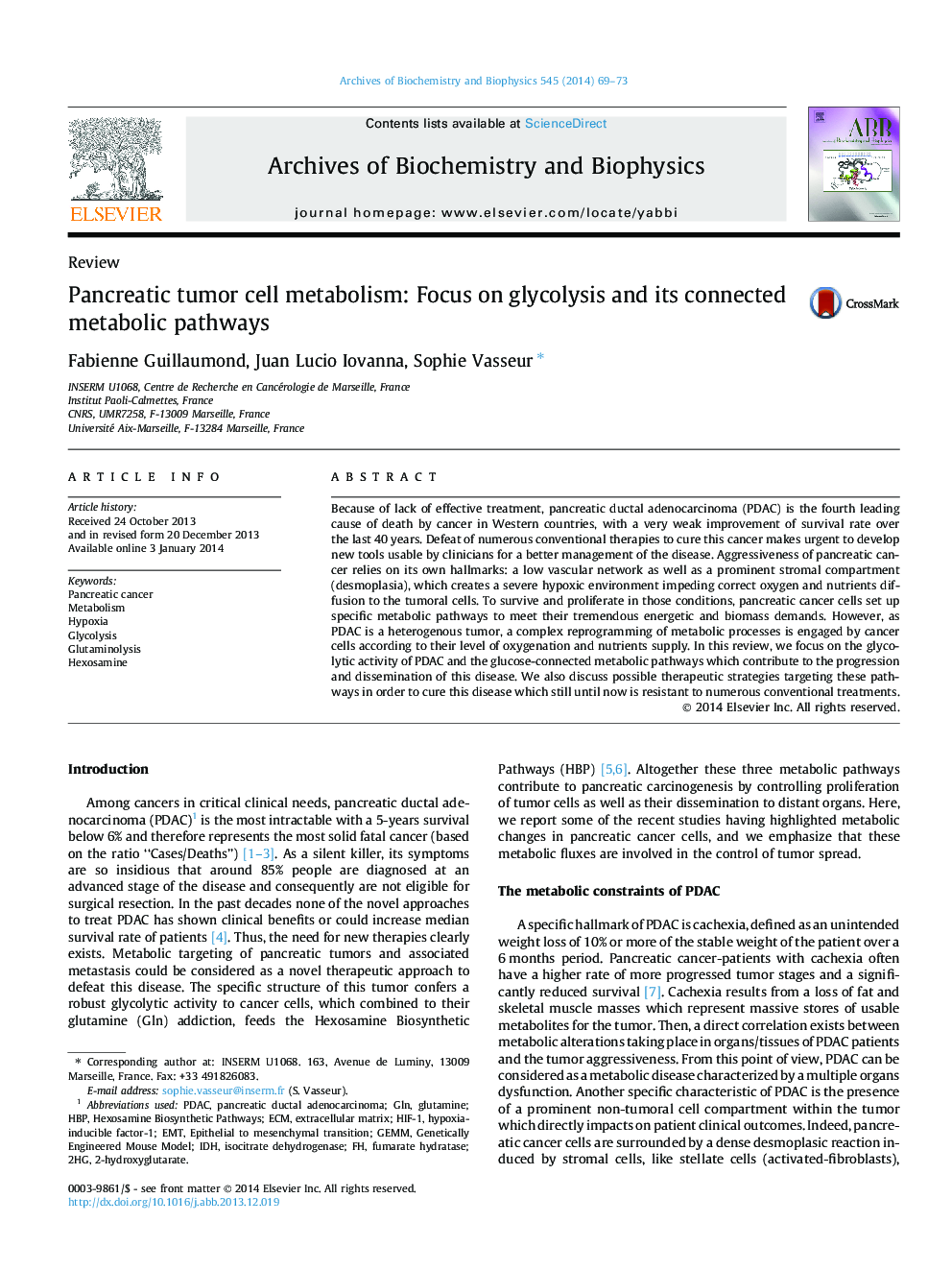| Article ID | Journal | Published Year | Pages | File Type |
|---|---|---|---|---|
| 1925245 | Archives of Biochemistry and Biophysics | 2014 | 5 Pages |
•Anatomopathologic features of PDAC force metabolic adaptation of tumor cells.•Hypoxic pancreatic cancer cells combine glycolysis and glutaminolysis.•Hypoxia promotes the Hexosamine Biosynthetic Pathway.•Pancreatic cancer cells use glycosylation processes to metastasize.
Because of lack of effective treatment, pancreatic ductal adenocarcinoma (PDAC) is the fourth leading cause of death by cancer in Western countries, with a very weak improvement of survival rate over the last 40 years. Defeat of numerous conventional therapies to cure this cancer makes urgent to develop new tools usable by clinicians for a better management of the disease. Aggressiveness of pancreatic cancer relies on its own hallmarks: a low vascular network as well as a prominent stromal compartment (desmoplasia), which creates a severe hypoxic environment impeding correct oxygen and nutrients diffusion to the tumoral cells. To survive and proliferate in those conditions, pancreatic cancer cells set up specific metabolic pathways to meet their tremendous energetic and biomass demands. However, as PDAC is a heterogenous tumor, a complex reprogramming of metabolic processes is engaged by cancer cells according to their level of oxygenation and nutrients supply. In this review, we focus on the glycolytic activity of PDAC and the glucose-connected metabolic pathways which contribute to the progression and dissemination of this disease. We also discuss possible therapeutic strategies targeting these pathways in order to cure this disease which still until now is resistant to numerous conventional treatments.
